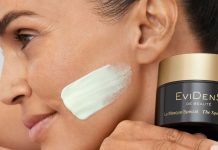There are a variety of reasons compression stockings may be recommended for individuals, from boosting performance in a certain sport to increasing the level of comfort experience at home or on the job. What most do not realize is that compression stockings are also used for the treatment and prevention of medical issues ranging in severity. The prevention of blood clots after a major surgery, easing issues related to circulation problems, and the relief from unsightly, often painful vein issues all fall into the category of what help compression stockings may offer in maintaining health and well-being. If you’re one of the millions of people around the world who suffer from the common issue of varicose veins, compression stockings can be a valuable tool in fighting them off.

How Compression Stockings Work
Compression stockings are snug-fitting socks worn on the lower legs to help improve circulation. Some forms of compression stockings are graduated, meaning the fit is much tighter around the ankle than the calf. Others are simply the tube portion of the stock, without an enclosure for the foot. Regardless of the type of compression stocking worn, wearing them as part of preventative treatment or relief from discomfort is designed to offer a benefit without imposing added pain or tightness. Compression stockings come in a variety of fabrics and weight so that individuals may choose the fit and feel that works best for their specific need or situation.
The science behind compression stockings is relatively straightforward. The pressure placed on the lowest part of the leg helps blood vessels do the job they are intended to do, relaxing the arteries so that blood can flow freely to the muscles and the heart. Because the blood within the legs is free flowing, it is harder for it to collect in the veins and form a clot or otherwise disrupt the flow. When a blood clot does form, it can cause painful swelling, achy muscles, and other issues that are difficult to treat. When varicose veins are a persistent issue, blood pools causing the veins to become weak or damaged which leads to mild to severe discomfort. With compression stockings, blood flow is less of an issue as oxygen can quickly and easily get to where it needs to go without any issues, and veins are squeezed together allowing them to function in the proper manner. For this reason, wearing compression stockings after surgery or having compression stockings prescribed by a doctor for the prevention and treatment of varicose veins are common.
Types of Compression Stockings
According to vein specialist Eddie Chaloner of Radiance Vein Clinic, selecting the right type of compression stocking is important in achieving the best outcome, either post-surgery or to relieve symptoms of varicose veins. Chaloner states, “Proper compression stockings are graduated with respect to the support they give to the leg, meaning they are designed to be tighter at the bottom than at the top. However, compression stockings are not a one-size-fits-all solution.” A large stocking, for instance, won’t exert the right amount of pressure on a very slim leg, because blood will not be pushed back freely or in the right direction. Fortunately, vein specialists and physicians are able to prescribe compression stockings based on the patient’s needs and size of the legs. In the UK, as an example, stockings are graded from Type 1 to Type 4, with the former having the least compression and the latter imposing the most. The majority of individuals suffering from varicose veins are best treated, and most comfortable, with a Type 1 or Type 2 stocking.
Compression stockings are a simple method to achieve greater comfort and improved blood flow for those with mild to severe varicose veins or those who have just undergone surgery. Unlike other preventative tactics, compression stockings can be easily worn beneath clothing, while at work or home, and throughout various activities during the day. By using compression stockings as directed by a medical professional, other, more invasive methods of reducing the discomfort caused by common vein issues may be avoided.











